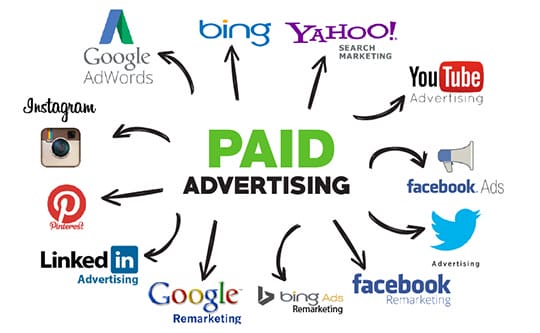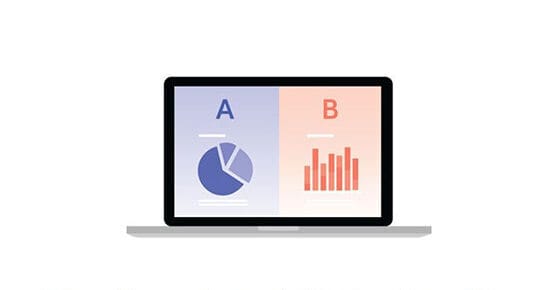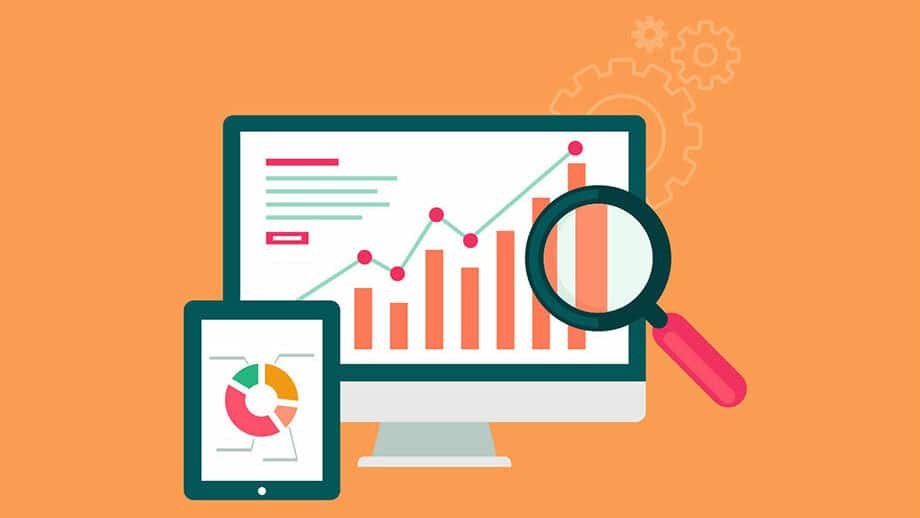Running ads online can either skyrocket your revenue – or drain your budget fast. Whether you’re using Google Ads, Facebook campaigns, or display networks, the goal stays the same: earn more than you spend. But getting there takes more than clever targeting and click-worthy headlines.
To actually see a strong ROI in online ads, you need smart planning, constant optimization, and tools that help cut wasted spend. This guide walks you through the practical steps that move the needle – and make every dollar count.
Why ROI is the Only Metric That Matters?

Clicks, impressions, likes… they’re nice to look at, but if they aren’t turning into revenue, they’re just noise. The real indicator of success? ROI – Return on Investment. It shows you exactly how much you’re making for every dollar spent.
And it’s more important than ever. In 2023, global digital ad spending hit $680 billion and is on track to top $855 billion by 2026. That’s a lot of ad dollars in play – so smart marketers are chasing efficiency, not just eyeballs.
Understanding your ROI isn’t just about channels – it’s about who you’re reaching. Not all customers are created equal. Segment your audience based on factors like purchase frequency, average order value, and retention rate to uncover which groups deliver the most long-term value.
Once you’ve identified your high-value segments, double down:
- Allocate more ad budget to reaching and retaining them.
- Use tailored messaging and creativity that speaks directly to their needs.
- Build customized funnels that match their buyer journey.
Smart segmentation ensures you’re not just generating clicks – you’re investing in the customers who actually move the needle.
Know Your Numbers Before You Spend

If you don’t have a handle on your core metrics, you’re just guessing. Before you even launch a campaign, you should be crystal clear on:
- Customer Acquisition Cost (CAC): What can you realistically spend to acquire one customer?
- Lifetime Value (LTV): How much revenue does a single customer bring in over time?
- Conversion Rate: How many visitors are actually becoming customers?
- Profit Margins: Is your revenue enough to support reinvestment and growth?
When these numbers line up, you can scale confidently – without draining your budget.
Track performance by channel or campaign – if Google Ads gives you a $50 CAC and Facebook sits at $80, that’s a clear signal where to double down.
Choose the Right Channels for Your Audience

Not every ad channel is right for every business. Success starts with finding where your audience spends time – and where they’re most likely to buy. Here’s a quick rundown:
- Google Ads: High-intent searchers ready to take action.
- Facebook/Instagram (Meta): Great for B2C targeting with rich visual and interest data.
- LinkedIn Ads: Powerful for B2B outreach and niche industry segments.
- TikTok & Snapchat: Ideal for brand awareness among younger, trend-savvy users.
- YouTube Ads: Great for storytelling, how-tos, and product education.
Start with one or two high-potential channels. Nail those, then consider expanding. Going wide too early usually means wasted spend and scattered results.
Don’t operate in a vacuum. Use competitive intelligence tools like SEMrush or Similarweb to uncover where your competitors are advertising and what’s working in your niche. It can save you months of trial-and-error – and point you toward high-performing channels faster.
Build Landing Pages That Convert

You can drive all the traffic in the world – but if your landing page doesn’t convert, you’re just burning money. A high-performing landing page should be fast, mobile-friendly, and built with a single purpose in mind – whether it’s to make a sale, capture a lead, or get a sign-up.
Must-have elements for a landing page that drives action:
- A clear headline that communicates your value instantly.
- A strong, action-oriented CTA (no guesswork about what to do next).
- No distractions – ditch the nav bar and keep the focus tight.
- Social proof, like testimonials, reviews, or trust badges.
- Quick load times – aim for under 3 seconds.
- Fully responsive across all devices (mobile-first is a must).
Not a developer? No problem. Tools like Unbounce, Leadpages, and Webflow make it simple to launch and optimize landing pages without writing a single line of code.
Where are users getting stuck? Tools like Hotjar or Crazy Egg can reveal what’s catching attention – and what’s getting ignored. Heatmaps and session replays help you spot friction points and make UX tweaks that can drive serious performance lifts.
Target Smart, Not Broad

It’s tempting to cast a wide net with your ads, but that usually leads to a flood of unqualified clicks. The better move? Narrow your targeting to zero in on the people who are most likely to take action.
Ways to refine your targeting:
- Use lookalike audiences based on existing customers.
- Layer interests and behaviors to create highly focused segments.
- Exclude users who aren’t fit (like past buyers or low-intent visitors).
- Retarget site visitors and abandoned carts with tailored ads.
The more focused your targeting, the more efficient your ad spend – and the better your results.
Stop Wasting Money on Click Fraud

Click fraud is one of the most overlooked threats to your ad ROI. Whether it’s bots, competitors, or shady traffic sources, fraudulent clicks can eat through your budget without delivering a single real customer.
That’s where tools like Hitprobe come in. Hitprobe helps detect and block invalid clicks before they drain your budget, keeping your campaigns clean and cost-effective.
Why click fraud protection matters:
- It preserves your budget for real users.
- Boosts your actual conversion rate.
- Gives you cleaner, more reliable data to optimize with.
If you’re investing seriously in paid ads, click fraud protection isn’t optional – it’s essential.
A/B Test Everything – But Be Strategic

If you’re not testing, you’re not improving. But not all testing is useful. You need to be intentional – test the right things, at the right time, with a clear goal.
Start with high-impact variables:
- Ad copy and visuals.
- CTA button wording and placement.
- Page layout or structure.
- Offers, discounts, or pricing formats.
Run one test at a time and give it enough time to reach statistical significance. The gains might seem small at first, but over time, they compound into real growth.
Use Retargeting to Increase Conversions

Retargeting is one of the most efficient ways to squeeze more ROI from your ad budget. You’re not chasing cold leads – you’re re-engaging people who already know your brand. All they need is the right incentive to come back and convert.
Retargeting strategies that actually work:
- Offer exclusive discounts to cart abandoners to close the sale.
- Remind users of recently viewed products to stay top-of-mind.
- Deliver helpful content that builds trust (think reviews, demos, or how-tos).
- Use scarcity and urgency like “Limited stock” or “Ends tonight” to drive action.
For best results, combine retargeting ads with email follow-ups and dynamic creatives that reflect each user’s behavior.
Even the smallest tweak in your ad copy can have a big impact. Swapping “Buy Now” for something softer like “Start Your Free Trial” might dramatically lift conversions. Regularly test different tones – whether it’s urgency, emotion, or even a dash of humor – to see what clicks with your audience.
Track Every Step of the Funnel

You can’t scale what you don’t measure. Solid tracking from first click to final conversion is non-negotiable if you want to optimize your ad performance and spend smarter.
Core metrics to track at every stage:
- Clicks from ads to landing pages.
- Interactions like button clicks or form submissions.
- Purchase events or completed conversions.
- Multi-touch attribution to understand longer customer journeys.
Tools like Google Analytics 4, Meta Pixel, and Conversions API help give you end-to-end visibility – so you can double down on what’s working and cut what’s not.
Real-time visibility into your funnel helps you spot problems before they become costly. Dashboards built with tools like Looker Studio or Tableau can surface drop-off points or bottlenecks at a glance, enabling faster, smarter optimizations.
Don’t Set It and Forget It

Digital ads aren’t a crockpot – you can’t just set them and walk away. Even the best campaigns need ongoing management to stay profitable.
Weekly metrics worth watching:
- CPC – Are you paying too much for clicks?
- CPA – Is your cost to acquire a customer sustainable?
- ROAS – Are your ads generating real returns?
- CTR – Are people engaging with your ads or scrolling past?
- Bounce rate & time on page – Are your landing pages delivering?
Watch for trends, not just daily blips. Be ready to pause, pivot, or scale based on performance – not gut feel.
Don’t let outdated structures drag down performance. Schedule monthly reviews of your account setup:
- Are campaigns still aligned with your core business goals?
- Are there redundant ad groups or stale offers wasting spending?
- Could audiences or exclusions be refined?
These regular check-ins keep your strategy sharp and responsive as your business grows.
Short-term wins are great, but long-term ROI is the real goal. Tie your paid ad performance to quarterly objectives that align with broader marketing KPIs. For example:
- Q2 Goal: Decrease CPA by 15%.
- Q3 Goal: Increase LTV from high-value customer segments.
Final Thoughts

Online advertising works – when it’s done with precision. It’s not about flashy headlines or massive budgets. It’s about:
- Knowing your numbers.
- Targeting with intent.
- Optimizing the customer journey.
- Protecting your spending from click fraud.
- Testing, tweaking, and improving every single week.
Do that consistently, and your ads won’t just drive clicks – they’ll drive real, lasting revenue. That’s the kind of ROI that scales.


